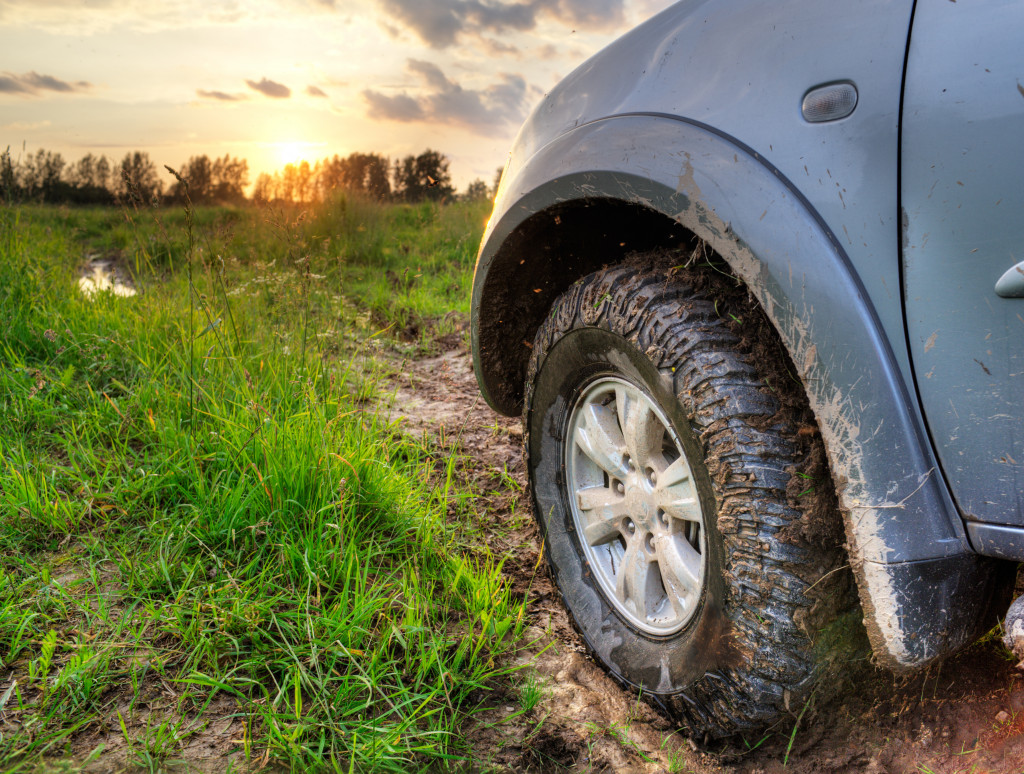Your driving habits are a reflection of how much you care for your car. They might indicate your regard for your safety too. Speeding might make you appear carefree and laid-back, but this reckless habit doesn’t just risk your life but the lifespan of your auto too.
Sadly, many drivers, especially young ones, misuse their cars. They tend to subject their vehicles to unfriendly conditions because it gives them a thrill and a good story to tell. But it won’t be as much of a good story anymore if their habits cost them their license or, worse, their lives.
What Causes Tire Damage?
The part of the vehicle that takes the most damage from drives is the tires. Since your car’s tires are constantly in contact with the ground, they suffer wear and tear the earliest out of your vehicle. If you’re driving with severely deteriorated tires, you might face many problems, from overheating to a rupture. So try to observe better car care and driving habits, and find out below what might happen to your tires if you drive recklessly:
1. Playing with the Wheels While Parked: Tire Treads Get Damaged
When you make a quick stop at a convenience store or the bathroom, avoid playing with the wheel while the car is parked. This action, called dry steering, makes the tires swivel left or right, putting pressure on the threads. When done repeatedly, the tires will eventually wear out unevenly or develop bald spots.
2. Not Slowing Down Over Bumps and Potholes: Cracks and Punctures
If you can’t avoid bumps and potholes on the road, then you can at least slow down when you drive over them. Zooming over bumps hurts your tires. Not only will the drive feel uncomfortable, but the bumps and potholes can also crack and puncture the tires. The rims might also get scratched.
3. Sudden or Unnecessary Braking: Tire Threads Get Worn Out
Hitting the brakes like an F1 racer does nothing to make you look like a skilled driver. It will make a devoted car lover cringe. Bad breaking habits wear out the tire’s threads, causing the same problems mentioned in number 1.
4. Ignoring Tire Pressure Warnings: Wheel Misalignment
When you’re driving and you notice the tire pressure light turn on, don’t ignore it. Driving with incorrect tire pressure can put the wheels out of alignment. The steering wheel will tend to drift to the side where the alignment is off when that happens. It will make your journey inconvenient and potentially risky.
The Dangers of Driving With Worn-out Tires

Bald tires, or tires with severely worn-out threads, are prone to overheating. The threads exist to reduce the friction heat coming from the tires’ contact with the surface of any road. The rubber hits the ground roughly without the treads, creating heat that might rise to unsafe levels.
Not only that, but bald spots are also more likely to puncture. So if you hit a sharp rock or glass shard on the road, the affected tire might flatten, if not rupture altogether.
When tires rupture mid-driving, it can result in a two-car or single-vehicle collision. Even if you have working airbags, there’s no guarantee that you’d leave such an accident unscathed.
Preventive Measures: Keeping Your Tires in Good Condition
If something as intense as that doesn’t happen, then your worn-out tires can decrease in pressure, affecting your fuel economy because the car will be harder to drive. In addition, if you drive on snowy roads, your worn-out tires will have a poor grip on the snow, making your car more likely to skid.
Hence, aside from observing good driving habits, be constantly updated with your car’s preventive maintenance schedule. And since winter is coming up, use snow chains or high-quality wheel socks. Wheel socks are a more affordable alternative to winter tires. They improve the traction on snow, reducing the risks of skidding and slipping.
However, you shouldn’t drive with wheel socks on rough roads, as that will rip the socks to shreds instantly. Just keep to asphalt roads if you have to drive with the socks on.
Also, ensure that your tires are always well-inflated and aligned. If you notice a slight problem, get to a mechanic ASAP to repair it immediately instead of waiting for it to get worse. Delaying repair or maintenance only increases your expenses.
And finally, no matter which car you drive, remember that you’re driving a four-wheeled vehicle just like others unless you’re driving a cargo truck. Four-wheel drive might make driving smoother on snow, but it won’t make you brake better. So brake early and keep checking your tire pressure.
Good tires can mean the difference between life and death, so don’t take your safety for granted anymore. Care for your tires before you pay the price.

